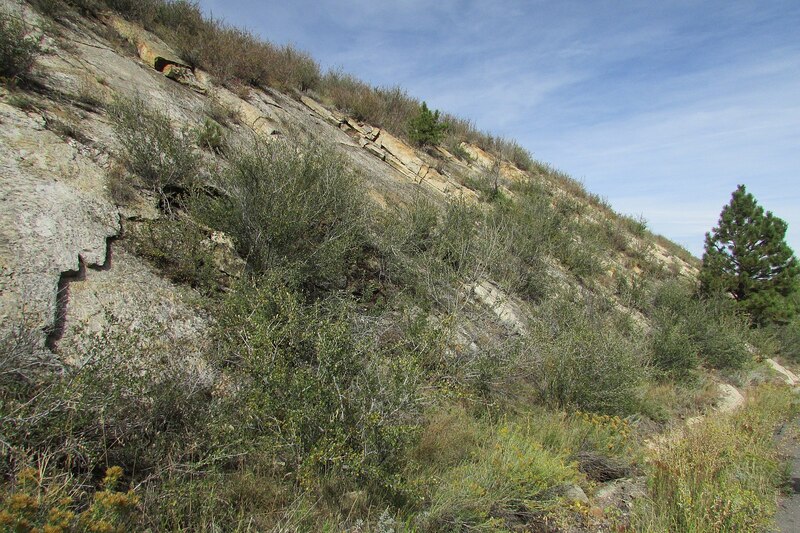Dinosaur Ridge

Paleontologists began excavating at Dinosaur Ridge in 1877 and it became well-known for its dinosaur fossils and hundreds of footprints. Nearly a century later, the National Park Service turned it into a National Natural Landmark, and today it is open to the public and offers a variety of geological, ecological, and paleontological information to visitors.
Dinosaur Ridge is a fossil site in the Morrison Formation and Cretaceous Dakota Formation, west of Denver, Colorado. Othniel Charles Marsh, professor of Paleontology at Yale College, and Arthur Lakes, a geologist and paleontologist, began excavation of the site in 1877. They discovered fossilized bones from many famous dinosaurs like Allosaurus, Diplodocus, Apatosaurus, and Stegosaurus. As the dig site became more popular, more and more people started bulldozing the land to uncover fossils to sell. To protect the ecosystem and to commemorate its significance as a fossil site, the National Park Service designated it the Morrison Fossil Area National Natural Landmark in 1973.
Othniel Charles March and Arthur Lakes first discovered the fossils in the Morrison Formation, on the west side of the area. Many quarries all over the site were subsequently opened by other paleontologists following this discovery. On the east side of Dinosaur Ridge, spreading across the states of Kansas, Nebraska, Iowa, Minnesota, and Wisconsin is the Cretaceous Dakota Formation. This part became famous in 1937 when construction workers building the Alameda Parkway uncovered hundreds of footprints. These dinosaur footprints are more difficult to identify than fossilized bones, but scientists believe these came from something similar to an Iguanadon, along with an unidentified type of predatory theropod. Dinosaur Ridge is massive in size and hosts a diverse and interesting amount of rare fossil phenomena like these footprints.
Dinosaur Ridge is open to guests and has a museum, dinosaur track site, quarry, gift shop, and hiking trail. The Dinosaur Ridge Exhibit Hall has information about its excavation history and the types of fossils paleontologists have found there. The hiking trails have signs and markers with information about many geologic and paleontological features visitors can explore, like a volcanic ash bed, where a white layer between shale and sandstone between other rock layers can be observed (signifying the presence of volcanic ash at the time), and a trace fossil site, where fossils of marine plants and animals appear as irregularities in the rock. It evenImages


